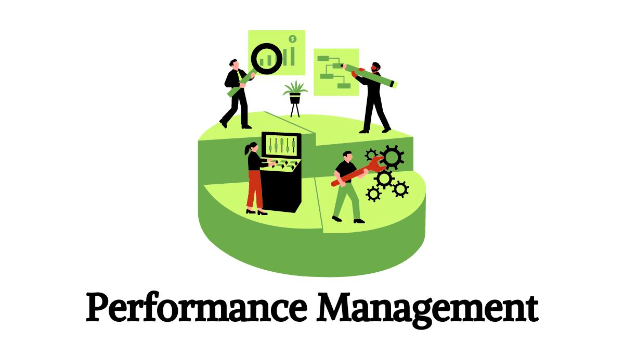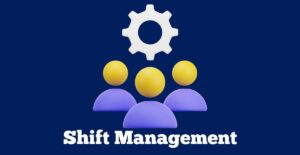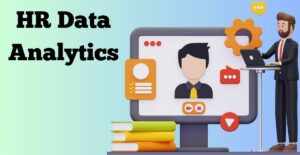Challenges in Performance Management
In the fluctuating labor market of the current era, the effective administration of, employee performance is a lighthouse that shows businesses the right way to achieve victory. Performance management is like a compass that creates a common framework and policy for strategic planning, individual efforts, and corporate objectives to align with each other. This is not only for output productivity purposes but it also creates a culture of excellence in the workforce environment.
- The human resource management systems (HRMS) and payroll software market symbolize just that milestone in the journey toward optimal performance management. Among the transformational changes brought upon by technology is the reinvention and enhancement of ages practices on hand, these revolutions have also resulted in high precision and efficiency. While most organizations are still grasping these instruments, they will give more space to a wide range of performance management improvements.
- To this restructuring process lie the investigations on what direction the performance management moves the organizational behavior. The focus of this paragraph is on the subtle weft that performance management plays between the existing human resources and the current software systems like payroll and HR management software. The interaction between the two systems is critically examined here and the challenges created are identified.
- Performance management is the never-ending zip that integrates individual contributions with top-level organizational aims. It enables employees to work through the opulent framework designed for an organization to have clear objectives, ongoing evaluation of progress, and effective feedback, which in the end helps employees achieve their strategic goals. While voicing the essential case for the significance of traditional performance management practices, however, the bias, subjectiveness, and the absence of transparency sometimes create hindrances to them.
- Move the performance management processes forward into a new era with HRMS and payroll software, today’s vanguards. Such comprehensive technologies owe their success to automation, the analytics of data, and the real-time feedback they offer, enabling the ways multi-organizations implement performance management. Through digitalization, they eliminate human intervention often associated with more administrative tasks which might influence the accuracy of performance evaluations.
- Another important feature is that through technology like HRMS and payroll software; organizations are now able to adopt a more data-driven way of performance management. Through the collection and examination of the voluminous employee data, these systems make it possible for a company to learn about performance patterns and to identify the weak spots and the areas that need improvement. These systems also provide reliable grounds for evidence-based decision-making. It not only improves the objectivity and fairness of performance evaluation but also enables companies to use a realistic view of performance issues before they become huge.
- The HRMS and payroll software have had a highly recommended feature in the fact that they actively aid in gender equity by implementing fair performance appraisals. In the past, when it came to the assessment of performance gender bias was often there, giving differences in opportunities and regarding performance. Although the mechanism of standardized evaluation criteria, guarantees transparency and prevention of subjective judgments of any kind (gender and others), technological means for assessing personnel offer a level playing field for all employees regardless.
As a result, HRMS and payroll software help provide timely feedback and mentor the cultural norms and this cultivates continued learning and personal growth. Features such as goal setting, performance tracking, and personalized learning initiatives enable employees to push themselves toward their professional development goals to become the best version of themselves. On top of that, it strengthens the position of the employees and helps the organizations to be more effective at removing talent barriers and duration improvements.
Overall, this paradigm shift in performance management using technology represented by HRIS and payroll software affects organizations leveraging the Human Resource Management Systems and the payroll system much differently than they used to in the past. Through machine learning, robotic process automation, and decision support systems the tools give you the power to bring in automation, data analytics, and real-time insights so that the system will help you to improve your performance management strategy, increase productivity, and cultivate a performance-driven organization culture. Having accomplished this ambitious task, it is pertinent for organizations to embrace these tech tools to enable them to achieve success in their chosen business and sports enterprise needs.
Common Challenges in Performance Management
- Alignment with Organizational Goals: Performance management is action-oriented getting individual and team goals aligned with overall strategic corporate objectives. HRMS gives the necessary directions so that the plan meets the objectives and there is continuous monitoring of the progress accordingly.
- Feedback and Communication: Open and transparent communication is a deliberate practice that involves the establishment of channels to ensure a straightforward and constructive feedback loop between managers and workers. HRMS systems are indeed one of the important components that can give clear, and time prompt feedback ways, to help in creating a work environment that promotes continuous improvement.
- Performance Appraisal Bias: HRMS systems (Human Resource Management Systems) utilize data analytics to help pinpoint and eradicate hidden biases involved in appraisals that take the performance of employees into account. By displaying the performance analytics objectively, the systems are in a good position to control discrimination and enforce fair and honest practices.
- Employee Engagement and Motivation: This can be achieved by using HRMS platforms to improve connection and enthusiasm among employees through constant feedback, sharing accomplishments, and applying gamification concepts. This is because these tools create an environment where the employees feel respected and motivated and all of them are given the same level of commitment in their workplace.
Leveraging HRMS and Payroll Software Solutions
- Integrated Performance Management Modules: These modules within HRMS software package competency-related jobs and assist performance-related requirements like performance appraisals and KRA setting. These applications reduced performance tasks to simple processes.
- Customizing Evaluation Criteria and Performance Metrics: Community HRMS platforms enable organizations to adjust both the criteria and the metrics of their evaluation system as well as performance metrics to meet the goals of their enterprise.
- Data-Driven Decision Making: The application using HR analytics gives companies the ability to identify performance issues and subsequently utilize predictive analytics to either tackle them early on or avoid them altogether.
Automation and Efficiency: The HRMS platforms offer workflow automation and as such, they are an alternative to the manual procedures. Integration with the payroll system gives a firmer grip on finance and, in turn, boosts operations at different levels of HR.
Overcoming Implementation Hurdles which are the biggest challenges in performance management
- Change Management: By implementing HRMS the model of change management does not only allow transitions without disruption but the change experience itself is as smooth as possible. Organizations convey to their employees the benefits of the systems and stress the necessity of the simplicity of the process and faster performance. Employees are trained comprehensively and job support resources are sufficient that enable them however get through their changeover process successfully without any questions being raised.
- Data Security and Privacy: HRMS systems, in particular, aim at sticking to the rules regarding the protection of data. Robust security measures, like encryption, encompass access to data and thus allow for secure storage and transmission of information. This way data encryption, privacy as well as security is guaranteed, thus maintaining trust with employees as well as other stakeholders and minimizing risks of violations or breaches.
Best Practices and Strategies to Overcome Challenges in Performance Management
- Regular Performance Check-Ins: Companies organize specialized frequent consultations to evaluate employees for further development. These forums create a feedback loop between supervisors and employees and thus enable timely goal parameter adjustment, which in turn highly contribute to the responsiveness and flexibility required in today’s personal performance management culture.
- Investing in Employee Development: The entities emphasize professional development and try to do this by the evaluation of the performance indicators data. HRMS integration with LMS systems brings to the student’s learning process an array of online learning material that empowers them to be lifelong learners and lead in their professional fields.



